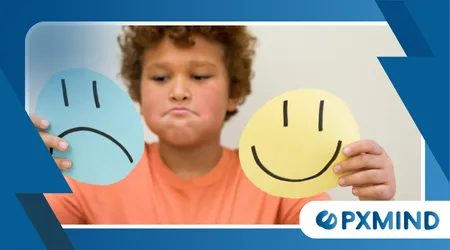How to Navigate Emotional Triggers Gracefully

Learning to Navigate Emotional Triggers Gracefully is one of the most powerful endeavors for a meaningful and peaceful life in this complex, fast-paced world.
Anúncios
Understanding the core of our emotional reactions transforms mere existence into a proactive journey of self-mastery.
We often find ourselves unexpectedly thrown off balance by specific people, situations, or comments.
Recognizing this pattern is the essential first step toward true emotional resilience and maturity.
When an emotional trigger strikes, our old, deeply ingrained neural pathways activate instantly.
This automatic response, often rooted in past unhealed experiences, pulls us into a state of reactivity rather than thoughtful action.
What are Emotional Triggers and Why Do They Matter?
Emotional triggers are specific stimuli that elicit an intense and often disproportionate emotional response.
These stimuli act as psychological pressure points. They are essentially emotional echoes from the past, echoing moments when core needs were unmet or when we felt threatened.
Understanding these echoes is crucial. Triggers matter immensely because they dictate our quality of life and the depth of our relationships.
Unmanaged triggers lead to communication breakdowns and regrettable actions. They essentially hijack our rational decision-making center.
Why is Self-Awareness the Compass to Emotional Freedom? Navigate Emotional Triggers Gracefully
Self-awareness acts as a powerful compass, guiding us through the fog of reactive emotions. It provides the necessary distance between the stimulus and our subsequent response.
The ability to pause, even for a millisecond, is where true freedom lies. This pause allows us to observe the emotional surge without immediately succumbing to its current.
Only through honest introspection can we map the terrain of our personal emotional minefield.
Imagine a seasoned professional who panics whenever a colleague uses a specific, seemingly innocuous phrase like, “Just circle back to me.”
++ Is Social Media Affecting Your Mood?
For this individual, that phrase is unconsciously tied to a childhood memory of a demanding, dismissive caregiver. This is a subtle yet potent trigger.
The key is in tracing the disproportionate anger or anxiety back to its original source.
How Can We Identify and Understand Our Deep-Seated Triggers?
Identifying deep-seated triggers requires a commitment to psychological excavation.
Journaling is a peerless tool in this process, helping track the events, the emotions felt, and the associated physical sensations.
See how interesting: Integrating mindfulness into daily activities
A pattern will emerge from this dedicated self-reporting, revealing the common threads that bind disparate triggering events.
Understanding the root cause does not magically dissolve the trigger, but it removes its mystery and power. It allows us to view the reaction not as a current threat, but as a historical echo.

What Role Does Mindfulness Play in Managing Immediate Reactions?
Mindfulness is the active practice of non-judgmental awareness of the present moment.
When a trigger is pulled, a mindful approach urges us to become an observer of our internal landscape. Instead of being the anger, we observe the anger.
Check this out: Speed Reading
Grounding techniques, such as the 5-4-3-2-1 method, immediately pull us back from the overwhelming emotional past into the solid reality of the present. This practice short-circuits the emotional surge.
Why is Emotional Regulation the Cornerstone of Resilience?
Emotional regulation is the set of skills that helps us respond flexibly and intentionally, rather than rigidly and reactively.
It is the cornerstone of psychological resilience, allowing us to bounce back from emotional distress more quickly.
This is not about suppressing feelings, which is harmful, but about consciously choosing how to express and process them.
A core part of regulation is managing the subsequent behavior, not just the initial feeling.
How Can We Apply Specific Techniques to Navigate Emotional Triggers Gracefully?
One effective technique involves cognitive reframing. When a situation triggers anxiety, the mind often jumps to catastrophic conclusions.
Reframing means consciously challenging that thought and seeking a more balanced, realistic perspective.
If your manager says, “We need to talk about your performance immediately,” and your trigger is the fear of failure, your initial thought might be “I’m going to be fired.”
Reframing this could be: “My manager wants to offer feedback to help me improve.”
| Core Trigger Category | Example Stimulus | Common Emotional Reaction | Effective Initial Response |
| Fear of Rejection | Unanswered Text Message | Intense Anxiety/Sadness | “I will wait 24 hours before assuming the worst.” |
| Fear of Loss of Control | Unexpected Schedule Change | Frustration/Anger | Deep, focused breathing for one minute. |
| Fear of Inadequacy | Receiving Public Criticism | Shame/Defensiveness | Acknowledging the feeling without defending. |
This process is a continuous, gentle redirection of our inner narrative. We must learn to Navigate Emotional Triggers Gracefully.

What is the Link Between Emotional Intelligence and Graceful Navigation?
Emotional Intelligence (EQ) is the capacity to be aware of, control, and express one’s emotions, and to handle interpersonal relationships judiciously and empathetically.
Navigate Emotional Triggers Gracefully is essentially the applied, practical expression of high EQ.
Data consistently supports its importance: A 2025 meta-analysis published in the Journal of Intelligence highlighted that Emotional Intelligence, particularly the ability to understand and manage emotions, was a strong and consistent predictor of superior teamwork processes and performance in collaborative problem solving.
The of a ship in a storm is apt here. A triggered person is like a ship caught in a squall, driven by the wind and waves of emotion.
A person who knows how to Navigate Emotional Triggers Gracefully has dropped the anchor of awareness, recognizing the storm but not being carried away by it.
They use the rudder of regulation to steer the vessel, even through the worst turbulence. Isn’t this command over our inner life the ultimate freedom we seek?
Another unique instance: A person whose trigger is the feeling of being ignored in group settings might impulsively interrupt conversations.
The graceful response is not to suppress the urge, but to recognize the familiar, painful feeling and consciously choose a non-reactive behavior, like simply waiting an extra ten seconds before speaking. This small act of resistance builds immense emotional muscle.
The practice of learning to Navigate Emotional Triggers Gracefully is a daily, committed endeavor. It reclaims your inner peace.
Reclaiming Peace and Response
Mastery of emotional triggers is the art of separating the past from the present. It involves self-awareness, deep introspection, and the persistent application of regulation techniques.
By understanding that a trigger is an alarm, not an immediate emergency, we take back our power.
This journey is the ultimate investment in mental health and well-being, leading us to not just react, but to consciously Navigate Emotional Triggers Gracefully, forging a path toward a more authentic and balanced self.
Frequently Asked Questions
What is the difference between an emotion and an emotional trigger?
An emotion is a natural, transient state (like sadness or joy) that arises from an experience.
An emotional trigger is a specific stimulus (a word, situation, person) that causes a sudden, intense, and often disproportionate emotional reaction rooted in past, unresolved experiences.
How long does it take to effectively manage my triggers?
Managing triggers is a lifelong skill, not a quick fix. You can see improvements in immediate reactions within weeks by practicing mindfulness and grounding.
True, deep management (addressing the root cause) is a longer-term process often supported by therapy or dedicated self-reflection.
Is it possible to completely eliminate my emotional triggers?
Completely eliminating every trigger is unrealistic, as our brains are wired to link stimuli with memory.
The goal is not elimination, but rather to minimize their intensity and disrupt the automatic, reactive response pattern, allowing you to choose a calm, intentional action instead.
